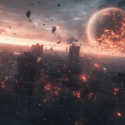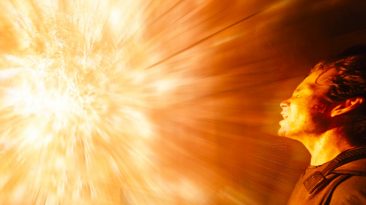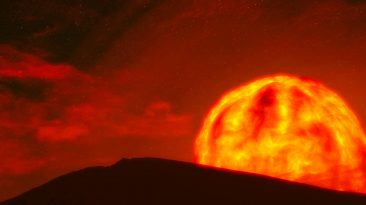Would you spend a night at the top of the first tower to space? At 100 km above sea level, it would be the highest structure that humans have ever built. This tower could house almost a million residents. But would that be worth the giant price tag of $25 trillion?
Could humans even survive the extreme conditions at the top? Would the Earth’s crust be able to support the weight of this massive structure? And how could we prevent it from falling over?
When it comes to building a space tower, there are a lot of obstacles to plan around. First, there’s the extremely cold temperatures that could freeze you to death. Then, there are the Category 5 hurricane winds that could cause the tower to sway and fall over.
Oh, and did we mention there would be barely any air pressure at the top? So you’d likely get altitude sickness, which could kill you. But even with all those hazards, we still think we can build one safe enough for humans to stay in. Want to see what it looks like?
Yes, it might look a little strange, but this is how we’d have to structure our tower if we don’t want it to fall over. If we didn’t shape our tower like a pyramid, it would buckle under its own weight, tilt to the side and crash to the ground. At 100 km (62 mi) tall, this pyramid would need a base as large as the area of Hong Kong to keep it stable.
It would also need a reinforced core to prevent it from swaying in the extreme winds found at the top of our atmosphere. At 70 km (43 miles) above sea level, winds of 252 km/h (157 mi/h) can occur, and the top of our tower would be 30 km (19 mi) higher than that!
Now that we’ve got a stable structure figured out, we need to find a way to transport people up to the top. Traditionally, elevators are limited to a height of about 500 m (1,640 ft). After that, they would be too heavy.
So we’re going to need something a little more modern. Like magnet-powered elevators, for instance. But even with those, we’d still be looking at superlong elevator rides to go up and down. This would be a serious problem if we want our tower to contain residences and offices.
But before we go selling our elevator ad space, we need to see if it would be safe for us to go up that high in the first place. At the top of Mount Everest, the air pressure is dangerously low, about 1/3 of the pressure on the ground. And our space tower would be 11 times taller than that.
If we didn’t regulate the air pressure inside the skyscraper, you could experience altitude sickness. And if we didn’t regulate the temperature as well, you could freeze to death by the time you reached the top.
Next we’d have to figure out how to provide running water throughout the tower. It would take a lot of pressure to pump water up so high. It would need hundreds of water reservoirs located at different levels through the building.
These water reservoirs would be filled in sequence, with each one being used to fill the one above it, all the way to the top. If the residences were to use as much water as the residences in the Burj Khalifa per day, we estimate that our space tower would use about 13 Olympic size swimming pools of water per day. That’s a lot to pump up.
And even if we solved all those challenges, there would still be one underlying issue that could inevitably sink the whole project. I’m talking about Earth’s crust. The Earth’s crust is only about 30 km (18.6 mi) thick, with a soft mantle underneath it.
Like a house on unstable soil, the tower would start to sink down into the ground over the years, as the Earth’s crust would be unable to sustain its weight. So for now, maybe we’ll just have to settle for the tall towers we already have.
Subscribe to What-If on YouTube or follow the show on Facebook Watch.
Sources
- “X-SEED 4000: World’s Tallest Tower Will House 1 Million People”. Yuka Yoneda, inhabitat.com.
- “Where does outer space start?”. 2020. Popular Science.
- ” X-Seed 4000 – The Skyscraper Center “. 2020. skyscrapercenter.com.
- “Barometric Pressures On Mt. Everest: New Data And Physiological Significance | Journal Of Applied Physiology”. 2020. Journal Of Applied Physiology.
- ” Burj Khalifa – The Skyscraper Center “. 2020. skyscrapercenter.com.
- “Climate – Winds In The Stratosphere And Mesosphere”. 2020. Encyclopedia Britannica.



























